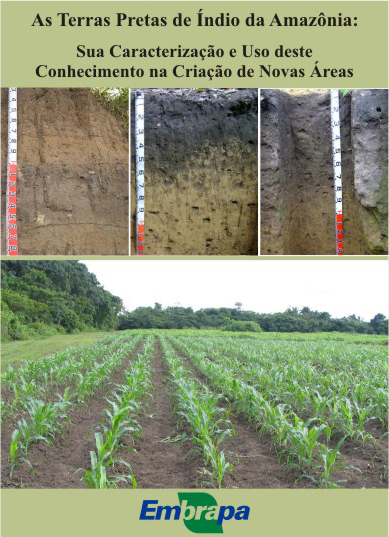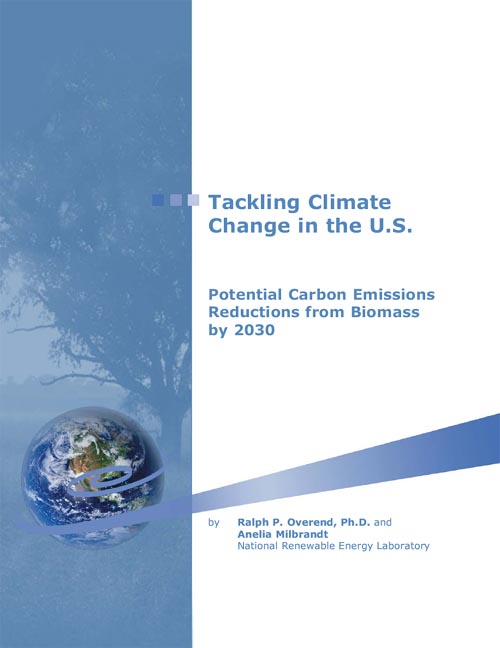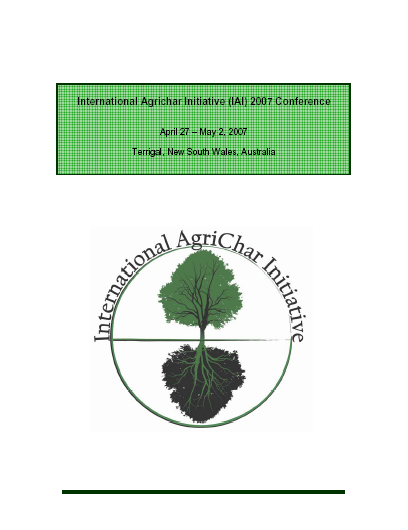|
New Technologies For A New Future - Biochar Book Chapter |

|

|

|
|
Biochar Carbon Sequestration , Green ThinDisc, An Interactive Multimedia Book, Chapter 17, Published by The United Nations Commission on Sustainable Develoment Partnership in New Technologies for Small Island Developing States, Thomas Goreau, prepared for COP15, 2009
|
|
New Brazilian Terra Preta - Biochar Book |

|

|

|
This book was presented at the annual meeting of the Brazilian Society for Scientific Progress, July 12 to 17, in Manaus. Click here for more information on the second Terra Preta Nova workshop during this meeting.

|
As Terras Pretas de ĺndio da Amazônia: Sua Caracterização e Uso deste Conhecimento na Criação de Novas Áreas
Editores-Técnicos: Wenceslau Geraldes Teixeira, Dirse Clara kern, Beáta Madari, Hedinaldo Narciso Lima, William Woods
Publisher: Embrapa Amazônia Ocidental, Manaus, AM, 2009
I. O Ambiente Amazônico
Paisagens Amazônicas sob a Ocupação do Homem Pre-historico: Uma Visao Geologica
Marcondes Lima da Costa et al.
Registros Palinologicos das Mudancas Climaticas na Amazonia Brasileira Durante o Neogeno
Maria Lucia Absy, Silane Aparecida Ferreira da Silva
Culturas de Disturbio e Diversidade em Substratos Amazonicos
William Balee
As Atividades Economicas das Populacoes Indigenas Amazonicas e a Formacao das Terras Pretas: O Exemplo dos Asurini do Xingu
Fabiola Andrea Silva
Os Solos e as Ciencias Humanas: Interpretacao do Passado
William Woods
2. As Terras Pretas de Indio na Amazonia
Evulucao do Conhecimento em Terra Preta de Indio
Dirse Clara Kern et al.
As origens Agricolas da Terra Mulata na Amazonia
William Denevan
Classificacao das Terras Pretas de Indio e Outros Solos Antropicos Antigos
Nestor Kaempf et al.
Formacao de Terra Preta na Regiao de Alto Xingu: Resultados Preliminares
Morgan J. Schmidt, Michael J. Heckenberger
A Etnociencia comparativa das Terras Pretas Amazonicas
Laura A. German et al.
Diversidade Vegetal em Solos Antropicos da Amazonia
Charles R. Clement et al.
Geoquimica das Terras Pretas Amazonicas
Juscilene A. Costa et al.
Materia Organica dos Solos Antropicos da Amazonia (Terra Preta de Indio) Suas Caracteristicas e Papel na Sustentabilidade da Fertilidade do Solo
Beata Emoke Madari et al.
A Fertilidade dos Solos de Terra Preta de Indio da Amazonia Central
Newton Falcao et al.
Metodos de Caracterizacao Quimica de Amostras de Horizontes Antropicos das Terras Pretas de Indio
Adonis Moreira et al.
Caracteristicas Quimicas e Mineralogicas e a Distribuicao de Fontes de Fosforo em Terras Pretas de Indio da Amazonia Ocidental
Hedinaldo Narciso Lima et al.
A mineralogia e Composicao Quimica de Fragmentos de Ceramicas Arqueologicas em Sitios de Terra Preta de Indio
Marcondes Lima da Costa et al.
As Propriedades Fisicas Dos Horizontes Antropicos (Terras Pretas de Indio e Terras Mulatas) na Amazonia
Wenceslau Geraldes Teixeira et al.
3. Terra Preta Nova
Terra Preta e terra mulata: suas potencialidades agricolas, sua sustentabilidade e suas reproduces
Wim Sombroek et al.
Estoque e Establilidade do Carbono nos Solos da Amazonia Brasileira
Philip M. Fearnside
O Carbono Pirogenico
Tony Jarbas Ferreira Cunha et al.
Utilizacao de Carvao e Subprodutos da Carbonizacao Vegetal na Agricultura: Aprendendo com as Terras Pretas de Indio
Vinicius de Melo Benites et al.
Corte e Carbonizacao Cum Uma Alternativa Ao Corte E Queima: Estudos na Amazonia
Christoph Steiner et al.
Utilizacao de Residuos de Carvao Vegetal Associado a Fontes Organicas de Nutrientes no Manejo Sustentavel do Solo e do Guaranazeiro (Paullina cupana var. sorbilis) na Amazonia Central
Murilo Rodrigues de Arruda et al.
Uso de Residuos Vegetais no Solo: Subsidios para o Formacao de Terra Preta Nova em Tailandia (PA)
Katia Fernando Garcez Moneiro et al.
Conversao Termoquimica de Biomassa em Biorefinarias
Garcia Perez et al.
Acesso a Recursos Geneticos e a Conhecimento Tradicional Associado
Simone Nunes Ferreira
|
|
Nitrogen retention and plant uptake on a highly weathered central Amazonian Ferralsol amended with compost and charcoal , J. Plant Nutr. Soil Sci. 2008, 171, 893–899
Long term effects of manure, charcoal and mineral fertilization on crop production and fertility on a higly weathered Central Amazonian upland soil
Original Paper, Plant and Soil, 2007
Steiner C, Teixeira WG, Lehmann J and Zech W 2004 Microbial response to charcoal amendments of highly weathered soils and Amazonian Dark Earths in Central Amazonia – preliminary results. In: Glaser B and Woods WI (eds.) Amazonian Dark Earths: Explorations in Time and Space, Springer, Berlin, Germany. pp. 195-212.
Steiner C. 2008 Soil
Charcoal Amendments Maintain Soil Fertility and Establish a Carbon Sink -
Research and Prospects . In Soil Ecology Research Developments. Eds Tian-Xiao
Liu. Nova Science Publishers, New
York.
Lenton T. M. and Vaughan N. E. 2009 The radiative forcing potential of different climate geoengineering options . Atmos. Chem. Phys. Discuss. 9, 2559-2608
"Bio-char in soil offers the greatest potential for long-term carbon storage on land."
Biochar, climate and soil: A review to guide future research. CSIRO Land and Water Science Report 05/09, Saran Sohi, Elisa Lopez-Capel, Evelyn Krull and Roalnd Bol
|
|
Congressional Research Service |

|

|

|
Biochar: Examination of an Emerging Concept to Mitigate Climate Change
CRS Report for Congress by Kelsi S. Bracmort, February 3, 2009
Summary
Biochar is a charcoal produced under high temperatures using crop residues, animal manure, or
any type of organic waste material. Biochar looks very similar to potting soil. The combined
production and use of biochar is considered a carbon-negative process, meaning that carbon is
removed from the atmosphere and will not be released into the atmosphere at a later time.
Biochar has multiple potential environmental benefits, foremost the potential to sequester carbon
in the soil for hundreds to thousands of years at an estimate. Studies suggest that crop yields can
increase as a result of applying biochar as a fertilizer to the soil. Some contend that biochar has
value as an immediate climate change mitigation strategy. Scientific experiments suggest that
greenhouse gas emissions are reduced significantly with biochar application to crop fields.
Obstacles that may stall rapid adoption of biochar production systems include technology costs,
system operation and maintenance, feedstock availability, and biochar handling. Biochar research
and development is in its infancy. Nevertheless, interest in biochar as a multifaceted solution to
agricultural and natural resource issues is growing at a rapid pace both nationally and
internationally.
Past Congresses have proposed numerous climate change bills, many of which do not directly
address mitigation and adaptation technologies at developmental stages like biochar. However,
biochar may equip agricultural and forestry producers with numerous revenue-generating
products: carbon offsets, fertilizer, and energy. A clearly defined policy medium that supports this
technology has yet to emerge (e.g., soil conservation, alternative energy, climate change).
This report briefly describes biochar, its potential advantages and disadvantages, legislative
support, and research and development activities underway in the United States and abroad.
read more (pdf)...
|
|
International Rice Research Institute (IRRI) |

|

|

|
IRRI developed a furnance producing carbonized rice husks as a by-product of the paddy drying process. "...some large rice mills in Thailand have already perfected this approach. Using rice husks to produce energy and biochar simultaneously, these mills reduce their fossil fuel bill and carbon emissions, and sell the biochar by-product to producers of bio-fertilizers...."
read more "Black Soil, Green Rice" Rice Today (April-June 2007)
|
|
Tackling Climate Change in the U.S. |

|

|

|
|
Potential Carbon Emissions Reductions from Biomass by 2030
by Ralph P. Overend, PhD. and Anelia Milbrandt
National Renewable Energy Laboratory

|
|
International Agrichar Initiative |

|

|

|
International Agrichar Initiative Conference Booklet

|
|